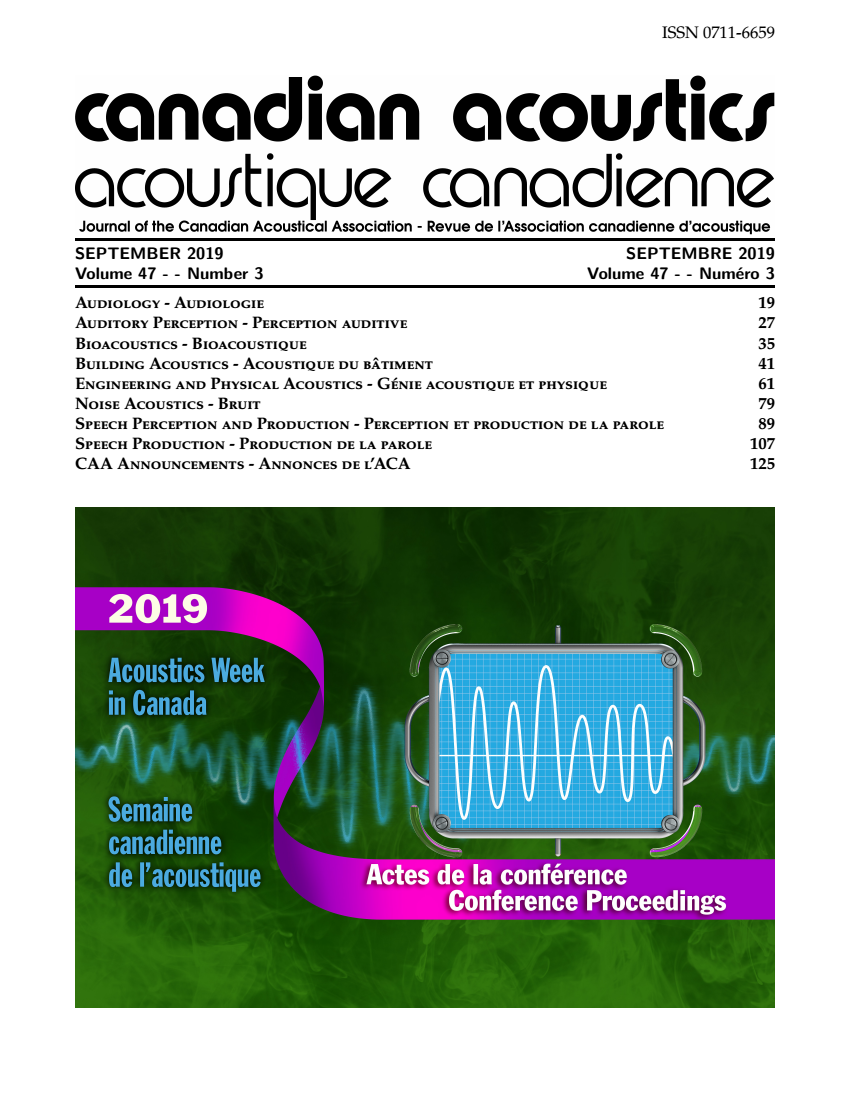Radiation Efficiency Of Cross Laminated Timber Panels By Finite Element Modelling
Abstract
Tall wood buildings are growing in North America with the development of mass timber panels such as cross laminated timber (CLT). As a new building material, the sound radiation behavior is not well understood. This study proposes a finite element modelling (FEM) approach using ABAQUS finite element software to investigate the sound radiation efficiency of typical Canadian CLT panels with experimental elastic constants. The FEM method is first developed based on isotropic thin plate theory and verified with reported analytical solutions. Then one CLT panel with simple-support boundary conditions from literature is modelled as both thin and thick orthotropic plates under harmonic excitations. The radiation efficiency is calculated by post processing the sound power and velocity from FEM. The results have been compared with the reported experimental data and analytical data based on thin orthotropic plate theory. A general agreement is found between the FEM results and the literature results except some discrepancies at certain frequency bands. An attempt was made to investigate the effect of boundary conditions on radiation efficiency considering the real boundary condition realized in the lab. It is found that the boundary condition has some effect on the results, the clamped boundary condition seems to have better agreement than the reported simple support. Moreover, the FEM approach is adopted to evaluate the radiation efficiencies of different CLT panels made in Canada, namely 3-ply, 5-ply and 7-ply, using experimentally measured elastic constants. The results reveal that the influence of elastic constants on critical frequencies of different types of CLT panels. Under the critical frequency (up to 500 Hz), the elastic constants have a significant effect on radiation efficiencies.
Additional Files
Published
How to Cite
Issue
Section
License
Author Licensing Addendum
This Licensing Addendum ("Addendum") is entered into between the undersigned Author(s) and Canadian Acoustics journal published by the Canadian Acoustical Association (hereinafter referred to as the "Publisher"). The Author(s) and the Publisher agree as follows:
-
Retained Rights: The Author(s) retain(s) the following rights:
- The right to reproduce, distribute, and publicly display the Work on the Author's personal website or the website of the Author's institution.
- The right to use the Work in the Author's teaching activities and presentations.
- The right to include the Work in a compilation for the Author's personal use, not for sale.
-
Grant of License: The Author(s) grant(s) to the Publisher a worldwide exclusive license to publish, reproduce, distribute, and display the Work in Canadian Acoustics and any other formats and media deemed appropriate by the Publisher.
-
Attribution: The Publisher agrees to include proper attribution to the Author(s) in all publications and reproductions of the Work.
-
No Conflict: This Addendum is intended to be in harmony with, and not in conflict with, the terms and conditions of the original agreement entered into between the Author(s) and the Publisher.
-
Copyright Clause: Copyright on articles is held by the Author(s). The corresponding Author has the right to grant on behalf of all Authors and does grant on behalf of all Authors, a worldwide exclusive license to the Publisher and its licensees in perpetuity, in all forms, formats, and media (whether known now or created in the future), including but not limited to the rights to publish, reproduce, distribute, display, store, translate, create adaptations, reprints, include within collections, and create summaries, extracts, and/or abstracts of the Contribution.


